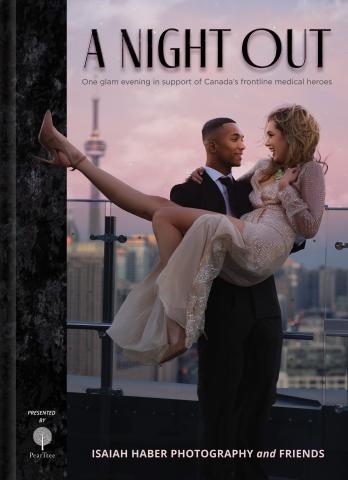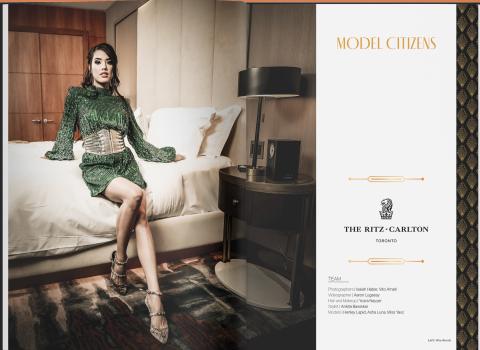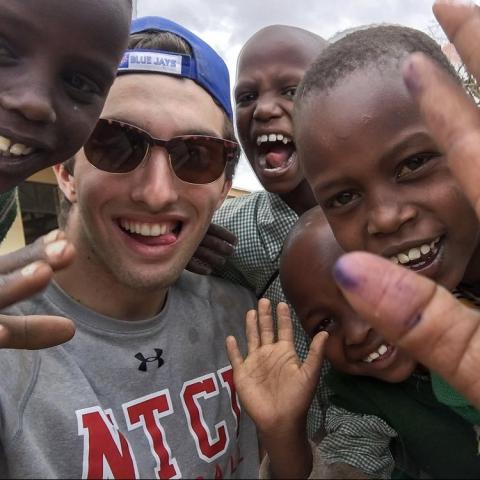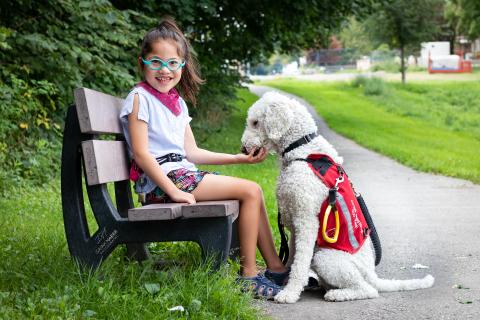Wilfred Laurier business student and professional photographer Isaiah Haber has used his downtime during the pandemic to create a beautiful keepsake that benefits frontline workers through University Health Network (UHN), a health care and medical research organization in Toronto.
The impressive 21-year-old created and produced a 153-page coffee table book, A Night Out, By Isaiah Haber & Friends, which “celebrates the glamorous nightlife we all miss.” Each photographer created their vision of a “fabulous and sensuous” night on the town.

Haber, who has one last semester of school this summer before the co-op program begins, had his photography income shrink when the pandemic first hit last March. While he later made the adjustement to outdoor and socially distanced shoots of pets and people, he wanted to put his skills and contacts to good use with the charity book.
The first A Night Out print run of 500 copies will raise $5000 for UHN (pre-orders cost $75 but now the book sells for $100; he also has masks for $15). The $8000 production cost was covered by financial organization Pear Tree Canada. He also did a “making of" video about the photoshoot, which can be viewed on the web site.
Samaritan spoke to Haber about his history of philanthropy and his aim with this high-end coffee table book.
This is an ambitious and time-consuming project. You could have simply volunteered at a food bank or donated money directly to frontline workers. Why this big undertaking?
One of the biggest things just to address why I chose to do this, as opposed to donating my time, is as well as wanting to support frontline workers that are working so hard to get us through the pandemic, I wanted to be able to provide opportunities for collaboration and promotion for other creators and businesses, and others in the creative industry that I knew were in the same position as me, and have had gigs dry up and were struggling just to keep that creative spark going find work to just sustain themselves. I wanted to be able to provide that opportunity to them as well.
I thought it was a great opportunity to take advantage of a negative situation and create a positive opportunity, as well with the businesses having such a unfortunate downturn. It’s a rare opportunity to work with the finest hotels in the city that would otherwise likely be full or unable to accommodate a project like this. The project started when I was — just like everybody else — because of the lockdowns stuck at home. I needed to do something to break that monotony. That's where the idea of ‘everyone could use a night out’ at this point came from, especially frontline workers because they’ll use that break to have a night out with family, friends and loved ones to get away from COVID-19. The book is almost more than a book; it's kind of a ticket or an experience to have this night out that we've all been missing.

Once I had the idea, everything snowballed into what it is now. It’s been a blur from concept to production of getting all this together and getting everybody on board. I've been so happy with the generosity of everybody donating their time. I started by reaching out to the first hotel, which was The Ivy at Verite. Right away they were on board. I was blown away by their generosity. That first ‘yes’ that I got from The Ivy at Verite really motivated me to reach out to the other hotels. That convinced me that for a good cause, and if you’re well-organized, people are willing to contribute their time, and when people come together, they can really make a difference.
Obviously, it's very costly to do a beautiful looking elegant coffee table book. Why do a limited-run $100 coffee table book versus a magazine or a calendar, something you could mass produce and sell for 20 bucks?
I would say the thinking there had two motivations. The first would be the different hotels and businesses that we're working with, their audience or target market generally tends to be a wealthier, higher end type of people. That's both the five-star hotels that we're working with, as well as some of the couture fashion brands that we've worked with. So we wanted to make sure that the book would appeal to and be in line with their audiences. The second motivation in creating a high-end coffee table style book, rather than a magazine, is that we wanted to create a memento or token of the time, being COVID-19, and an escape from the time, as well being a good representation of the different creative styles within our city. The benefit of involving as many different contributors to the book as possible was that we're able to see a range of different styles and different artists within the book. I think that really adds to the lasting nature of a book.
How will the money be administering specifically to frontline workers?
We're working with University Health Network, which has a specific fund called the Emergency COVID-19 Fund. That fund supports the frontline workers at their various hospitals, in a range of ways from a supply of PPE [personal protective equipment] to improving rest areas so that the frontline workers have somewhere to take a break, even to paying their parking tickets. These frontline workers have obviously been working so hard and we sometimes don't think about the areas that they need help other than just supplying PPE. It's an authentic organization in terms of helping those who need it most in the way that they need it most.
Where can the book be purchased?
Our main sales avenue is our website. We are also working with several of our partnered hotels, whey will be displaying books or cover boards that display the front and back cover of the book. Customers of those locations can scan a QR code on those cover boards to purchase the book online and then pick it up directly from whatever location that is, whether it's a hotel or some of the brands that we're working with. Unfortunately, with Toronto going back into lockdown, people may be better off just ordering and having it shipped to their house. That might be a faster option.
Has COVID affected you in terms of making extra income as a photographer while you're a student?
Absolutely. Even though I'm a student, I had been consistently working as a photographer since I started university. Definitely a lot of my work came from events, as well as like things like family portrait sessions. Those things dried up completely, so definitely had to look for alternative ways to keep myself busy. I was fortunate to be in a situation where I was able to volunteer my time as a student without the need to make an income for myself. I was able to take a few months off and put in the work for the people that need it most.

I started volunteering for what was then Free The Children, now We Charity, when I was in grade 6. My teacher had a writing contest to write about why each student thought they deserved to go to that year's WE Day. At the time, the message about WE Day was that you can't buy a ticket, you have to earn your ticket. It's for the youth that want to change the world and youth to inspire other youth to make a difference. That opportunity was very inspirational for me.
Back then, WE Day was still grassroots and had motivational speakers from Al Gore to [WE Charity co-founders] Marc and Craig Kielburger themselves to the Dalai Lama. After seeing that, I became very much attached to the charity and their idea of youth inspiring youth to make a difference. So the next year I ended up becoming the youngest ever volunteer for a WE Day. And that was one of the first years that it was at the ACC [Air Canada Centre, now Scotiabank Arena] and subsequently volunteered for WE Day and quite heavily for the Free The Children organization for the next five or six years.
What kinds of things did you do for them during that time?
It culminated with my trip to Tanzania with the organization. It was a volunteer trip where we were building a school in a rural village there, as part of their five pillars approach to breaking the cycle of poverty, as well as just fundraising initiatives all throughout the years that I was involved with them. When I was younger that involved things more like bake sales and lemonade stands, but as I got older, I attended their leadership camp when I was around 14 years old, and that reinforced the idea of being able to combine a passion with an important cause to make a difference.
I think that's largely when I started trying to use photography to make a difference and use that in a philanthropic way. Since then, I've volunteered for several charity organizations as a photographer. For example, the Lions’s Dog 
After you finish school, will you be taking what you're learning in business school and applying it to a social enterprise?
I think, no matter where my career takes me, I always want to make sure that I am giving back to both the social causes that I care about, as well as giving back to the creative community, and constantly doing things that provide opportunities for other creatives as were provided to me when I was learning. Whether I actually apply that to a social enterprise per se, I think my photography business itself will always have that focus on philanthropy and on helping others.